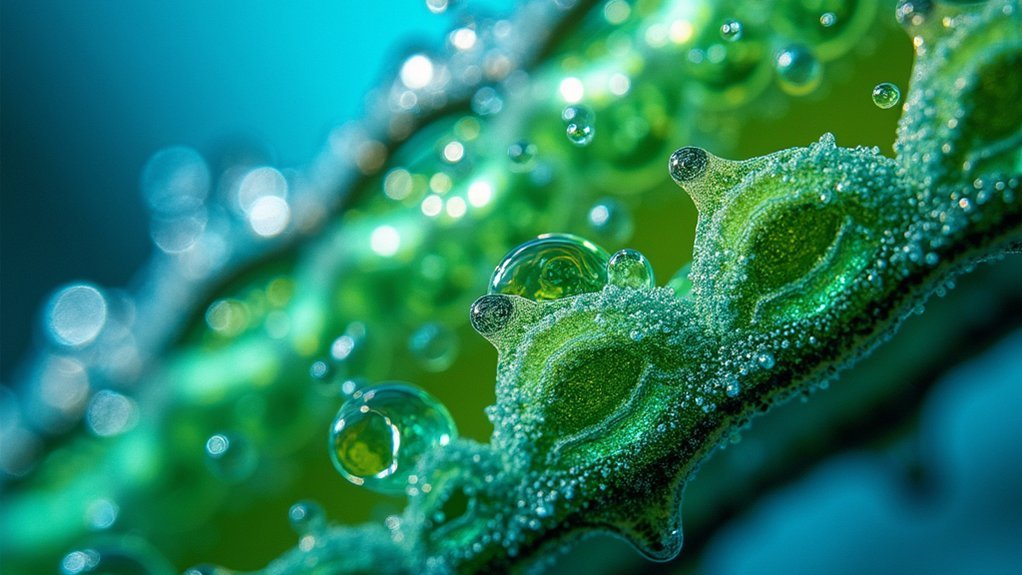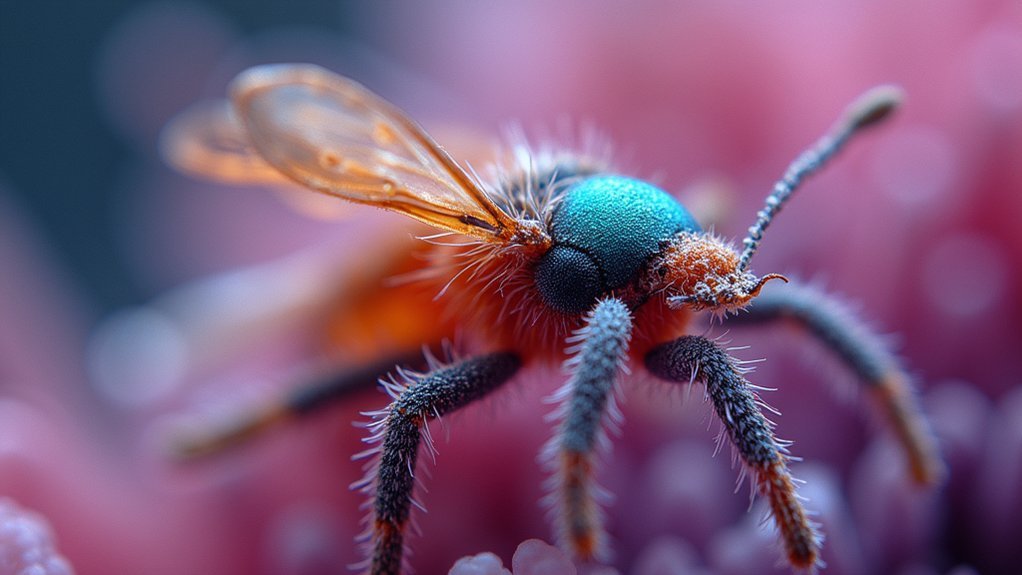To sharpen your microscopic images, opt for lower magnification to enhance depth of field, master lighting angles by positioning sources strategically around your specimen, use focus stacking to combine multiple focal planes, balance resolution with appropriate magnification levels, and apply post-processing techniques like unsharp masking in software like Adobe Photoshop. Each technique works together to reveal intricate details that might otherwise remain hidden beneath the surface of your microscopic world.
5 Best Techniques To Sharpen Your Microscopic Images

Five essential techniques can dramatically improve the sharpness of your microscopic images.
First, opt for lower magnification settings rather than high magnification when possible, as this naturally enhances depth of field and overall clarity.
Second, experiment with image stacking by capturing multiple frames at varying focal points, then combining them using Photoshop or free alternatives.
Third, carefully adjust your microscope’s lighting and angle—proper illumination is vital for revealing fine details.
Fourth, use smaller apertures when available to reduce the circle of confusion, leading to crisper enlargements.
Finally, incorporate post-processing software like Adobe Lightroom to fine-tune sharpness, shadows, and highlights after capture.
These techniques work together to transform blurry specimens into striking, publication-quality microscopic photographs with exceptional detail.
Mastering Lighting Angles for Enhanced Detail Capture
When viewing specimens under a microscope, proper lighting makes the difference between seeing basic structures and revealing hidden microscopic worlds. By experimenting with different lighting angles, you’ll uncover details that remain invisible under standard illumination.
Position your adjustable light sources strategically to highlight specific features of your specimen. As you rotate the light around your subject, you’ll notice how certain structures become more prominent while others recede.
For maximum detail, consider stacking images taken under different lighting conditions. This technique, combined with the EoDF function on advanced microscopes, dramatically improves depth and clarity.
You can also implement HDR photography principles by capturing multiple exposures at varied lighting angles, then combining them to create remarkably detailed final images.
Optimal Focus Stacking for Extended Depth of Field

While proper lighting reveals hidden details, even the best illumination can’t overcome the inherent depth of field limitations in microscopy.
That’s where focus stacking becomes invaluable, especially for high-magnification work. By capturing multiple images at different focal planes, you’re able to combine these layers into one remarkably sharp composite. This technique dramatically enhances overall clarity and detail perception throughout your specimen.
You’ll achieve best results by maintaining consistent lighting across all images. If your microscope doesn’t include built-in stacking features, don’t worry—software like Photoshop or free alternatives can effectively merge your images.
For improved results, consider using lower magnification settings during capture, as this provides better baseline depth of field before stacking. The final stacked image will reveal intricate details that would otherwise remain blurred in conventional single-shot microscopy.
Resolution and Magnification Balance for Clarity
Although many microscopists instinctively reach for the highest magnification possible, finding the best balance between resolution and magnification is vital for achieving truly clear images. When you increase magnification, you’ll often sacrifice depth of field, making it harder to maintain focus across your entire specimen.
| Magnification | Resolution Impact | Best Practice |
|---|---|---|
| Low (40-100x) | Wider DoF | Use for larger specimens |
| Medium (100-400x) | Balanced clarity | Ideal for most applications |
| High (400-1000x) | Reduced DoF | Lower resolution for faster capture |
| Very High (1000x+) | Extremely shallow DoF | Use smaller apertures for sharpness |
You’ll achieve better clarity by sometimes reducing resolution at higher magnifications, allowing for quicker adjustments. Consistent positioning and smooth focus adjustments are vital for maintaining this delicate balance between resolution and magnification.
Post-Processing Strategies for Sharpness Enhancement

Even the most meticulously captured microscopic images can benefit from post-processing techniques that enhance sharpness and reveal hidden details.
Adobe Photoshop’s unsharp masking and high-pass filtering are powerful tools to bring out fine structures that remain hidden at high magnification.
When microscopic details elude capture, Photoshop’s unsharp masking and high-pass filtering reveal what the lens alone cannot see.
For specimens with varying focal planes, image stacking is invaluable.
Software like CombineZM and Zerene Stacker can merge multiple shots into one crisp composite, dramatically improving depth of field without sacrificing clarity.
Capture at higher resolutions initially to give yourself more flexibility during editing.
While this requires more processing power, the results justify the investment.
Don’t overlook Adobe Lightroom for final refinements.
Its intuitive controls for shadows, highlights, and clarity can transform an adequate microscopic image into a stunning visualization with professional-level sharpness.
Frequently Asked Questions
How to Make a Microscope Image Clearer?
To make a microscope image clearer, you’ll need to adjust light sources, use image stacking techniques, guarantee stable mounting, and fine-tune your focus knobs. Post-processing with software like Photoshop can further enhance clarity.
How to Enhance Microscope Images?
To enhance microscope images, you’ll need to adjust lighting angles, use image stacking techniques, optimize resolution settings, edit with software like Photoshop, and guarantee stable positioning during capture for maximum clarity and detail.
How to Improve Resolution in a Microscope?
To improve your microscope’s resolution, select higher settings (up to 3200 X 2400), use a computer with USB3 ports, maintain stable positioning, and adjust lighting. You’ll also benefit from post-processing software for final enhancements.
What Is Used to Sharpen the Image on a Microscope?
To sharpen the image on a microscope, you’ll need proper focus adjustment, ideal lighting, and sometimes image stacking techniques. You can also use software tools and lower magnification to enhance clarity and detail.
In Summary
You’ll transform your microscopy by applying these five sharpening techniques consistently. Experiment with lighting angles, implement focus stacking, balance magnification with resolution, and use post-processing tools judiciously. Don’t overcomplicate your workflow—start with one method and gradually incorporate others. With practice, you’ll develop an intuitive sense for when to apply each technique, producing crisp, detailed images that reveal microscopic worlds with stunning clarity.





Leave a Reply